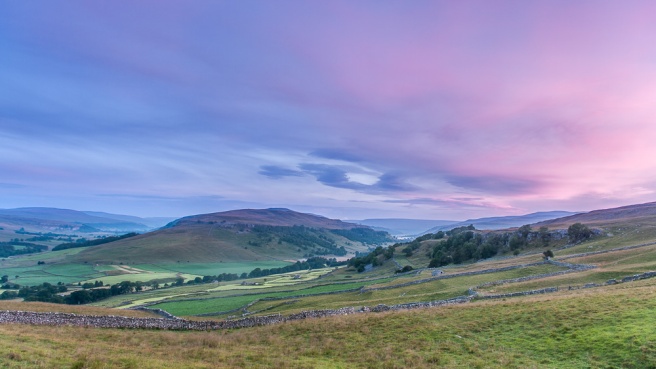I just found this post in my Drafts folder in WordPress and realised it had been there since early summer and never posted. I think I held it back because the trip hadn’t fully worked out and I didn’t get many shots from the morning sunrise. Looking at it now though, there aren’t many shots here but they’re nice ones so here’s the post, to remind me of summer wild camping trips.

After a good night’s sleep in warm, calm weather I eventually awoke to my alarm from a deep sleep at 4:15 am. The sky looked very promising and there was an almost-full moon on the other side of the valley. I got up and got ready and hid my camping stuff out of sight so they wouldn’t be seen in any shots I took.
I got increasingly excited as the clouds started to catch with orange light. However it was clear that the sun was going to come up right behind the highest part of the hill beside me – something I could have found out easily if I’d checked my compass. More to the point there were enough clouds in the way that the initial promise soon fizzled out. Just like my Eskdale trip of a few days before the sunrise was to disappoint and leave me with unfinished business. So – not many shots in this post but hopefully I’ll be back.

















 I wrote about
I wrote about 
























